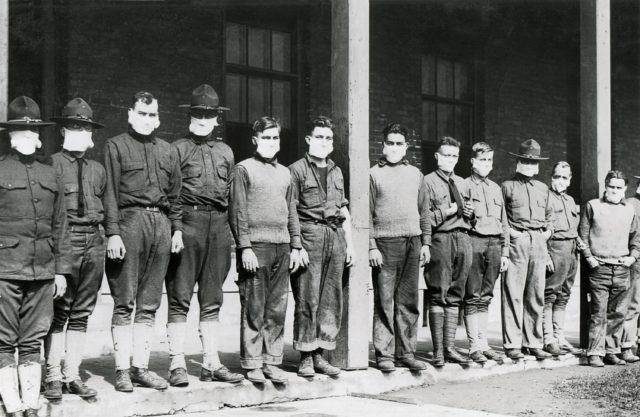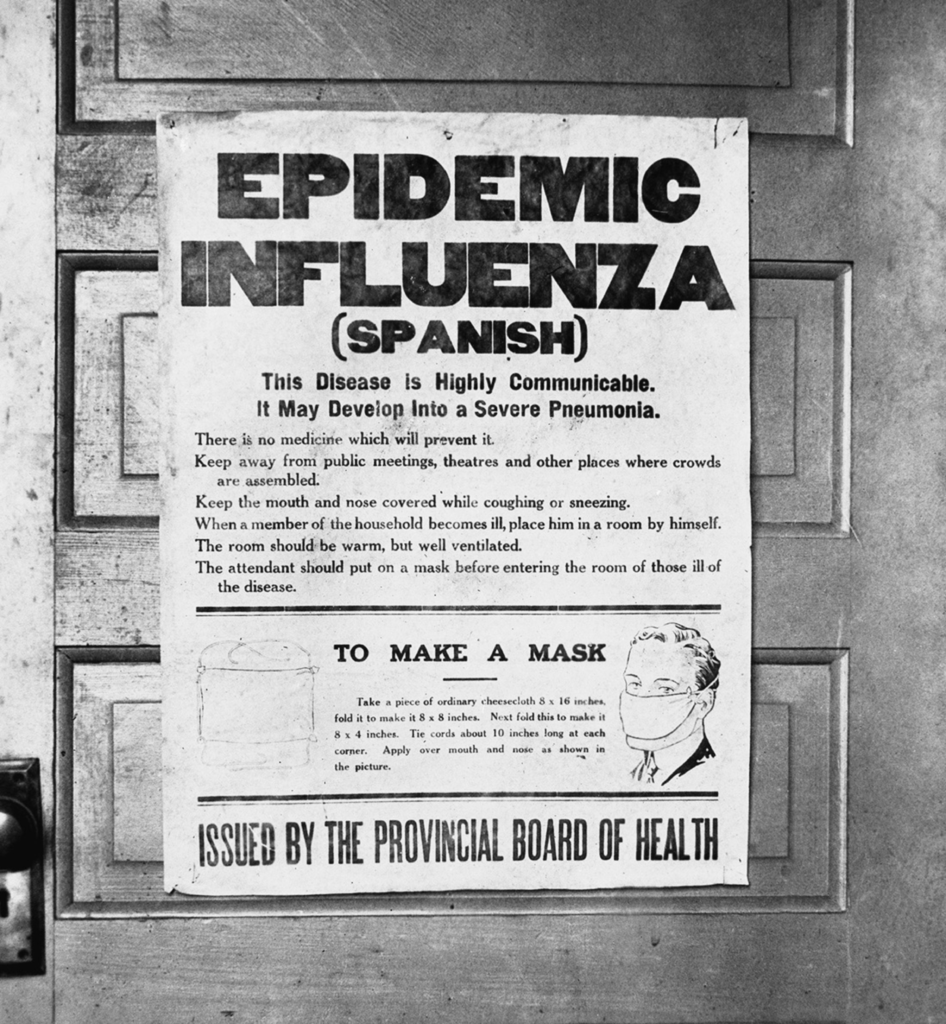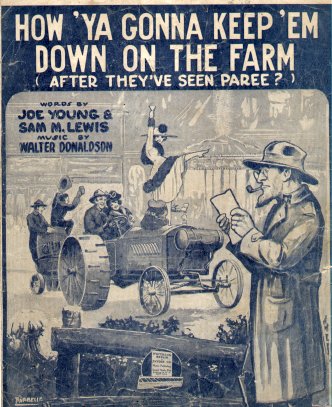
Large-scale crises — like a global pandemic, for instance — have a way of exposing society’s vulnerabilities; like a UV light on a crime scene, our transgressions come into view.
This is what COVID-19 has done: It’s shown us our crimes. In the United States, “the system” is broken. Our consumer-driven economy is built on the backs of wage earners who rarely have savings accounts or health insurance. There is no national standard for paid sick leave or a universal income that can fill the gaps when disaster strikes. Millions are homeless as local governments ask us to shelter-in-place.
But we’ve been here before. The bubonic plague, smallpox, cholera, the influenza pandemic of 1918, HIV/AIDS, SARS, MERS, ebola — the world is no stranger to microscopic wars that lay bare our inequities and prejudice and greed.
While looking back on health crises of the past doesn’t give us a crystal ball to the future, it does give us a chance to reflect on who we’ve been, a yardstick by which to measure how much — or how little — we’ve grown.
If you ask historians whether we’ve changed, you could sum the answer up as, “Kind of, but not really.”
“The kind of tensions that we are living through now, between controlling an epidemic and engaging in economic activity, appear in almost every historical epidemic,” says Elizabeth Fenn, a historian at CU-Boulder who focuses on the early American West, epidemic disease, and Native American and environmental history. “If you look at the cholera epidemics that afflicted East Coast cities, especially New York, in the 19th century, you will see that initially, mercantile interests would try to suppress news of an epidemic. They’d try to do anything they could to keep commerce flowing in order to basically continue economic viability. And eventually there would be enough pressure, thanks to the devastation of the epidemic, that some stores would close down or regulations or quarantine would be imposed, and businesses would have to essentially suck it up for a while. But it happens again and again in these epidemics.”
The current president himself took to Twitter on March 22 to proclaim, “We cannot let the cure be worse than the problem itself,” (adding a sense of urgency by writing the message in all caps) the “problem” being a highly contagious, sometimes deadly virus, the “cure” being physical distancing that slows down the economy.
History is not on Trump’s side. Research by Sergio Correia and Stephan Luck of the Federal Reserve and Emil Verner of MIT found that during the influenza pandemic of 1918 (the xenophobically dubbed “Spanish” flu), American cities with the highest number of deaths also tended to suffer the most economically in the long run.

A period photo of a poster issued by Alberta’s Provincial Board of Health alerting the public to the 1918 influenza epidemic.
“The fatality rate was highly dependent on public policies,” The Economist wrote of the study. “The authors estimate that cities which imposed tougher-than-average restrictions suffered 560 deaths per 100,000 people, on average, compared with 730 per 100,000 elsewhere. They also found that governments which implemented stricter policies, such as banning public gatherings and shutting down churches and schools, fared better than those which pursued more lenient ones.”
Today, some workers — those deemed essential, like grocery and liquor store employees, not to mention health care workers — face an absurd choice: losing money by choosing voluntarily not to work, or working to pay the bills and risking their health. Speaking with Denverite in an April 6 article, Chris Martinez, head of the Hispanic Contractors of Colorado, said the local construction industry (deemed an essential industry during stay-at-home orders in Colorado) is mostly Latino. Research backs this up, with the National Association of Home Builders reporting that immigrants made up one-fourth of the construction industry in 2016.
This says nothing about undocumented workers, who often work with no benefits packages, no paid sick leave or health insurance. If these undocumented workers fall ill and cannot work (or if they cannot work because of closures in industries like food service), they are entitled to no money from the recently passed federal stimulus package, even if they’ve paid taxes using an Individual Taxpayer Identification Number (ITIN).
“In the 1930s Depression, Mexican immigrants get essentially pushed out and really strongly encouraged to leave, including people who have citizen children,” says Vilja Hulden, a labor historian at CU-Boulder. “Certainly that’s something that hasn’t changed all that much.”
While the Great Depression was a different type of crisis than our current pandemic, its roots were planted in the flu pandemic of 1918. Susan Kent, a CU-Boulder historian who wrote a book on the subject, explains that the 1929 stock market crash “was a symptom, not a cause, of depression that already existed.”

“We had depression in the agricultural sector by 1919 all around the world,” she says.
This was partially due to the winding down of the war effort, but Kent believes the death of 50 million people worldwide from the flu epidemic that occurred concurrently with The Great War played a role as well.
“I have to think that when you take [50] million people out of the market, out of the consumer market, you probably have a pretty significant impact on the amount of food that’s being purchased,” she says. “We don’t have the data [to back that up], but logic would tell me that the impact [would have been] pretty significant.”
We’re still a long ways off from knowing the final death toll from COVID-19, but we’re already seeing its impact on the agricultural industry. Seasonal temporary workers from Jamaica and Mexico were delayed from traveling to Vermont for the harvesting season, according to VTDigger. While these workers made it two weeks later, they still had to subject themselves to international travel during a pandemic. Closer to home, in Greeley, health officials are contemplating closing the JBS meat packing plant — which employs hundreds of Somali-Americans — over health safety as workers have fallen ill with COVID-19.
While race doesn’t play a role in which industries are deemed essential or not, racial inequality is thrown into stark relief when we see who suffers most during a crisis like the COVID-19 pandemic. “‘It’s a racial justice issue’: Black Americans are dying in greater numbers from Covid-19,” reads a headline in The Guardian; similar takes on that theme are found in The Washington Post, NBC News, ProPublica and more.
Then there’s blatant racism. “Asian Americans describe ‘gut punch’ of racist attacks during coronavirus pandemic,” wrote PBS; “Anti-Asian hate continues to spread online amid COVID-19 pandemic,” reported Al Jazeera.
Donald Trump, again during a press conference, referred to the coronavirus as the “Chinese virus.”
“This business about blaming others for an epidemic is predictable,” Fenn says. It just happens every single time. When syphilis erupted in Europe for the first time in 1493, every country named it for the country that they perceived had infected them, so it became the French disease or the Spanish disease or the Italian disease.
Fenn says that during the cholera epidemics in New York and in other cities on the East Coast, Irish immigrants were a particular target for racism and violence.

“When [the bubonic] plague erupts in Hawaii and San Francisco in 1900,” Fenn says, “whites targeted the Chinese community and blamed them for bringing plague into their midst. And the thing is, these diseases, they don’t distinguish between ethnicity, they don’t distinguish immigrants from non-immigrants. They are race blind. But they aren’t poverty blind. They do have a predilection for circulating in crowded conditions. That’s the nature of epidemic disease.”
Many have projected hope that the COVID-19 pandemic will bring about labor reform, like a national policy for paid sick leave, and work-adjacent policies like a universal income for times of crisis and untethering health care from employment.
But Hulden, the labor historian, says that labor-reform progress of the past has taken on a two-steps-forward-one-step-back kind of pace.
“In 1917 there’s a massive strike wave and the [United States] government has to have war production going at the same time,” she says. “So … there is more government support for some fundamental labor policy, support for labor unions, so [workers] don’t strike. A lot of the progressive reformers at the time, they were excited about that. They [felt like] the war [was] an opportunity for us to push through these reforms.
“But then after the war, what happens? Well, there’s a massive strike wave in 1919 and the repression of that is just incredible. The amount of firepower and police work that the government puts behind repressing that is quite extraordinary,” Hulden says. “That continues into the 1920s, and labor’s weakness in the 1920s of course also contributes to growing inequality that then contributes to the start of the Great Depression.”
The Depression, Kent believes, got a helping hand from the 1918 flu pandemic. But she takes that pandemic’s reach even further into World War II.
In early 1919, President Woodrow Wilson contracted the flu. The virus was rampant in Paris at the time, where Wilson was meeting with other heads of Allied states to negotiate the terms of the peace treaty that would officially end The Great War.
“The prime minister of Great Britain and the premiere of France are insistent that the peace treaty imposed on Germany be harsh — really harsh,” Kent says. “They want to cut [Germany] off at the knees and never allow them the resources to take Europe to war again.”
Wilson stood firm behind the progressive stances he took when he drafted the peace treaty principles in his Fourteen Points: free trade, open agreements, democracy and self-determination.
“He resists all the way down the line [France and England’s] attempts to make this a punitive peace [treaty],” Kent says. “And then he gets sick with the flu and he is laid up for roughly a week to 10 days.”
“It was a disease called encephalitis lethargica, which occurred after influenza a few years later and then disappeared. [A] sequel to influenza,” historian John Barry told radio station WBUR. “And Wilson got it. He had been standing absolutely firm in the peace conference prior to getting sick. After he got sick, people were saying that they had never seen him like that. He was paranoid. He couldn’t remember an hour later what had been discussed an hour before.”
When he emerges from his sick bed, Kent says, he’s in no condition to stand firm against the French and British heads of state.

“They impose on Germany this very harsh peace [treaty] that Wilson says to his aide, ‘If I were Germany, I would not sign this,’” Kent says. “And it’s the peace treaty, the first Versailles treaty, that helps to create the conditions in Germany that will give rise to fascism.”
These are the types of reverberations that global pandemics can have. Today, in the United States, our president refuses to wear a mask, saying at a press conference, “I just don’t want to be doing — somehow sitting in the Oval Office behind that beautiful Resolute Desk, the great Resolute Desk, I think wearing a face mask as I greet presidents, prime ministers, dictators, kings, queens, I don’t know, somehow I don’t see it for myself.”
Will his actions lead to World War III? No one can say, nor can we say definitively that Wilson contracting the flu in 1919 led to the harsh economic conditions that begat World War II. But what historians can say is that leadership has mattered in the past. For three years under President Herbert Hoover, Americans suffered at the onset of the Great Depression. It wasn’t until 1933, when Franklin D. Roosevelt was elected, that the country began to turn the tide by implementing sweeping social programs and labor reforms.
Looking to the future, Kent has a bold, and blunt, statement.
“I’ll be crude, and I would ask you to be careful in terms of quoting me here,” she says. “If the Trump administration is reelected and stays in office, we are up shit creek. The government has to be rebuilt and it has to be rebuilt on the backs of people who are knowledgeable, who respect science, who respect individual rights, who are honorable and not putting in place a system that’s designed to benefit them personally. All of this, all of our survival, it seems to me, depends on November.”














